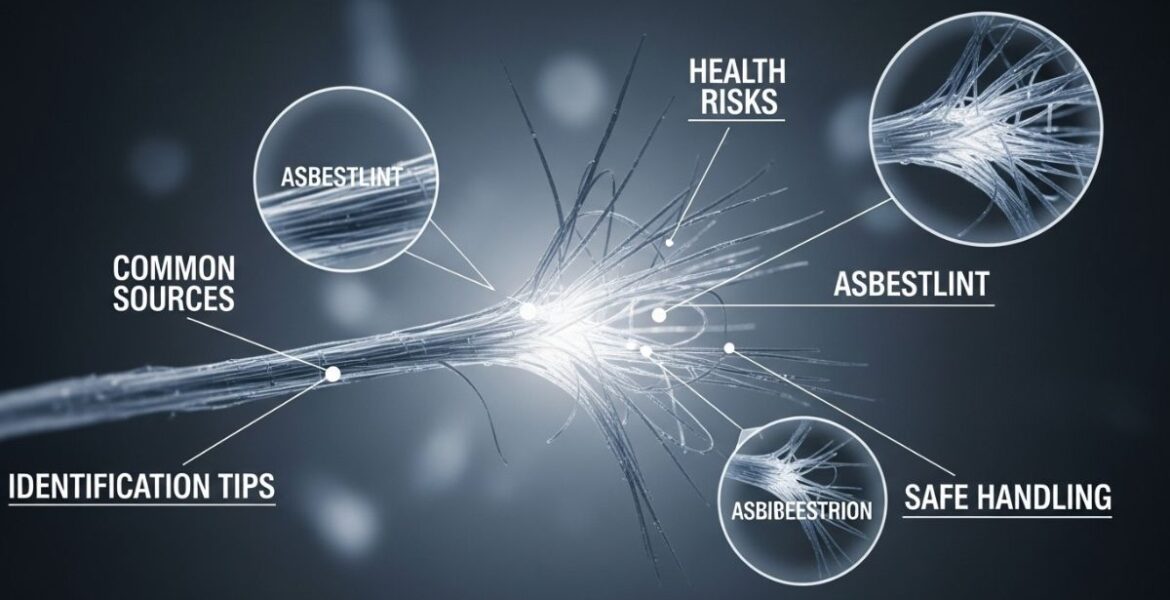Unraveling asbestlint: What You Need to Know About This Hazardous Material

Asbestlint, or asbestos tape, has long been a topic shrouded in mystery and concern. This seemingly innocuous material once enjoyed popularity for its heat-resistant properties, but lurking beneath its surface is a darker truth. Asbestos has become synonymous with danger, leading to serious health risks and widespread regulations aimed at protecting public safety. If you’ve ever encountered asbestlint in your home or workplace, it’s crucial to understand what it is and the implications of exposure. Let’s dive into the essential facts about this hazardous material and uncover why awareness is key to safeguarding your health.
The Dangers of Asbestos Exposure
Asbestos exposure poses significant health risks that cannot be underestimated. This once-popular material was widely used for its insulation properties and fire resistance. However, its fibrous structure can become airborne when disturbed, leading to inhalation.
Once inhaled, asbestos fibers can become trapped in the lungs. Over time, this accumulation may lead to serious diseases such as mesothelioma or lung cancer. The symptoms often remain hidden for years, making early detection challenging.
Additionally, those who work in construction or renovation are at a heightened risk. Even minor renovations can disturb asbestlint lurking within older buildings without anyone realizing it.
Family members of workers also face danger through secondary exposure—fibers clinging to clothing and hair can unknowingly spread into homes. Awareness is crucial; understanding these dangers helps protect not just individuals but entire communities from lasting harm caused by this hazardous material.
Regulations and Laws on Asbestos Use
Asbestlint has a complicated legal history due to its health risks. Many countries have enacted strict regulations regarding its use, recognizing the dangers it poses.
In the United States, the Environmental Protection Agency (EPA) plays a crucial role in asbestos management. They have established guidelines for handling and disposing of this hazardous material. The Occupational Safety and Health Administration (OSHA) also sets standards to protect workers from exposure.
European nations are similarly vigilant. The European Union has banned all forms of asbestos since 2005, reflecting a growing awareness of public safety.
Local laws may vary significantly as well. Some regions offer stricter enforcement than others, influencing how businesses manage asbestlint in construction or renovation projects.
Compliance with these regulations is essential for safety and legal protection. Non-compliance can lead to hefty fines and serious health consequences for workers and residents alike.
Identifying and Removing Asbestos
Identifying asbestlint can be tricky. It’s often hidden in walls, ceilings, and floors of older buildings. If you suspect its presence, avoid disturbing the material. Disturbing it could release harmful fibers into the air.
Professional inspection is crucial for accurate identification. Trained experts use specialized tools to detect asbestos content in materials suspected of containing it.
If removal becomes necessary, never attempt a DIY approach. Asbestos abatement requires licensed professionals who follow stringent safety protocols. They have protective gear and equipment designed specifically to handle hazardous materials safely.
Ensure that proper disposal methods are followed once asbestos is removed. This prevents contamination and protects both public health and the environment from potential exposure risks associated with improper handling of asbestlint remnants.
Health Risks and Symptoms of Asbestos Exposure
Asbestos exposure can lead to serious health issues. The most common diseases associated with it are asbestosis, lung cancer, and mesothelioma. These conditions develop over time, making early detection challenging.
Symptoms may not appear until many years after initial exposure. Persistent coughing or shortness of breath often signals an underlying problem. Chest pain and tightness can also be alarming signs that warrant medical attention.
Individuals exposed to asbestlint should remain vigilant about their health. Regular check-ups become crucial for those who worked in industries where asbestos was prevalent. Early diagnosis significantly impacts treatment outcomes.
Moreover, family members living with someone who has been exposed might face indirect risks too. Taking precautions is vital for everyone involved, ensuring safety from this hazardous material’s lingering effects.
Conclusion:
As we delve deeper into the topic of asbestlint, it becomes clear that awareness and education are crucial. The risks associated with this hazardous material cannot be overstated. Understanding its dangers, knowing how to identify it, and recognizing the regulations surrounding its use can significantly impact your safety and health.
The importance of professional help in identifying and removing asbestlint is paramount. If you suspect that you have encountered asbestos in your home or workplace, do not attempt to handle it yourself. Seek the guidance of certified professionals who can safely manage asbestos removal.



Leave a Reply